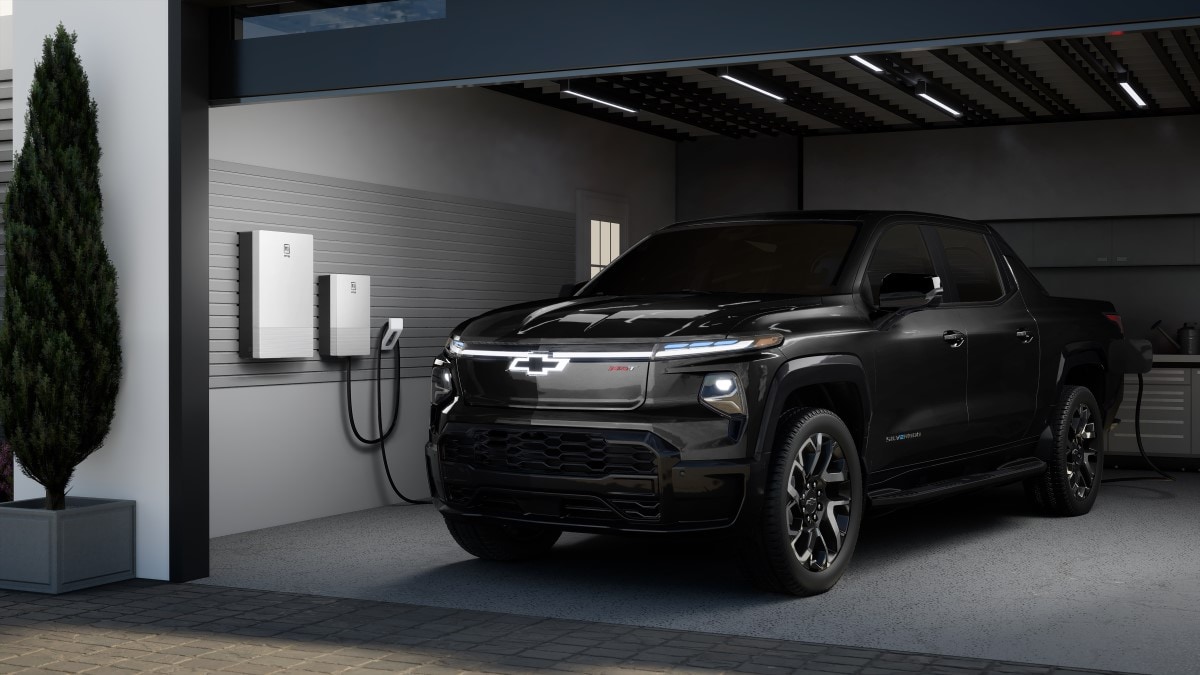The energy grid of the future looks radically different from the energy grid of today. Since electrification first began to spread to homes, Americans have used separate forms of energy to power their homes and their cars – which can cause us to miss the fact that most of us drive around with energy storage all the time.
We’re storing that energy as gasoline, and that’s not useful for powering a home.
Electric cars store that energy as electricity – precisely what we use to power our homes. Someday, we’ll routinely transfer power back and forth between our homes and our cars. The technology would let homeowners use their vehicles for power in a blackout.
They could also save money by charging batteries when energy is inexpensive and using stored energy when getting “fresh” energy is expensive. A home’s storage batteries could be mounted on the wall or inside a car.
Large-scale use of the technology could be many years away, but you can buy it today.
GM is the latest automaker to offer vehicle-to-grid power technology. The automaker has launched a separate business division, GM Energy, selling bi-directional charging technology that lets an electric vehicle power a home.
Pricey at First
The technology isn’t cheap. A bundle that allows you to charge an electric vehicle (EV) from your home and your home from your EV starts at $7,299. GM estimates that a future system with a home battery to store several days’ worth of energy from solar panels or another energy source will start at $12,699.
Those prices don’t include installation.
But those prices are in range with rival products. Ford’s similar setup, sold in partnership with energy company Sunrun, starts at $8,900 without batteries.
GM’s system today works with the 2024 Chevrolet Silverado EV. The company says integration with the GM Sierra EV, Chevrolet Blazer EV, Chevrolet Equinox EV, and Cadillac Lyriq is “coming soon.”
The company says the equipment “will be accessible through current GM mobile brand apps, allowing customers to seamlessly manage the transfer of stored energy.”
For the curious, GM has set up a website, GM Energy Live, where you can interact with a specialist who will demonstrate the technology via video. It’s similar to EV Live, a service where hosts answer questions about GM EVs in a no-sales environment.
Where This Goes Someday
Bill Gates once wrote, “We always overestimate the change that will occur in the next two years and underestimate the change that will occur in the next ten.” Today, we’re in the 2-year phase of that quote. Automakers are scaling back their EV transition plans, and the Biden administration is making planned tailpipe emissions regulations less aggressive.
But these are the early days of the EV transition. The 10- or 20-year phase could look radically different. When most Americans drive around with large batteries, those batteries could become essential to a national energy strategy.
Several electric power companies have already begun helping local school systems buy electric buses in exchange for the right to use those buses as parked energy storage in summer when schools are out of session. That idea could spread to homeowners and private cars.
Duke Energy runs a small pilot program in North Carolina that pays EV owners a monthly fee in exchange for allowing the company to draw energy from their vehicles during peak energy usage periods.








